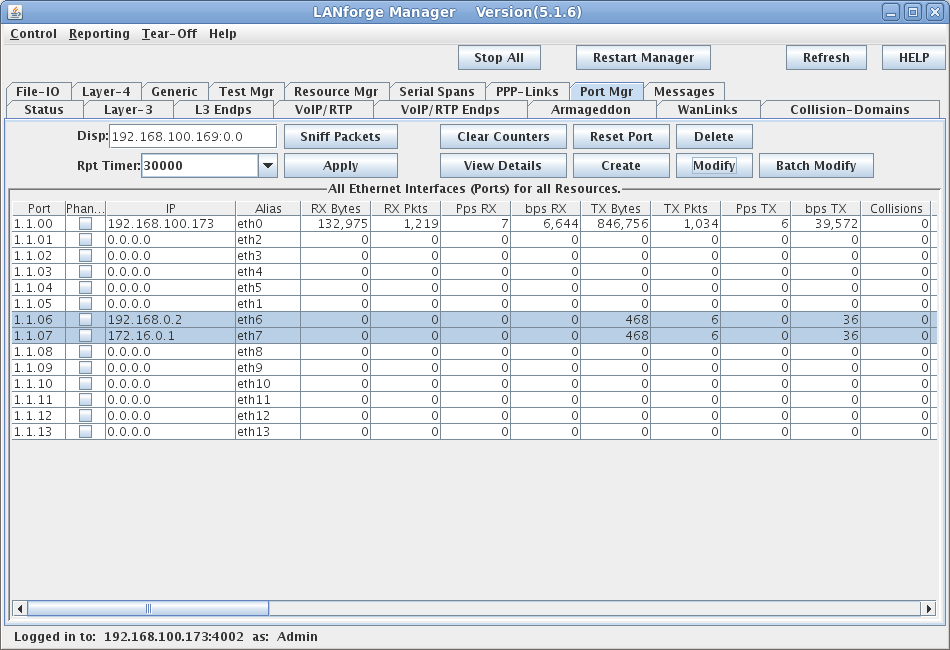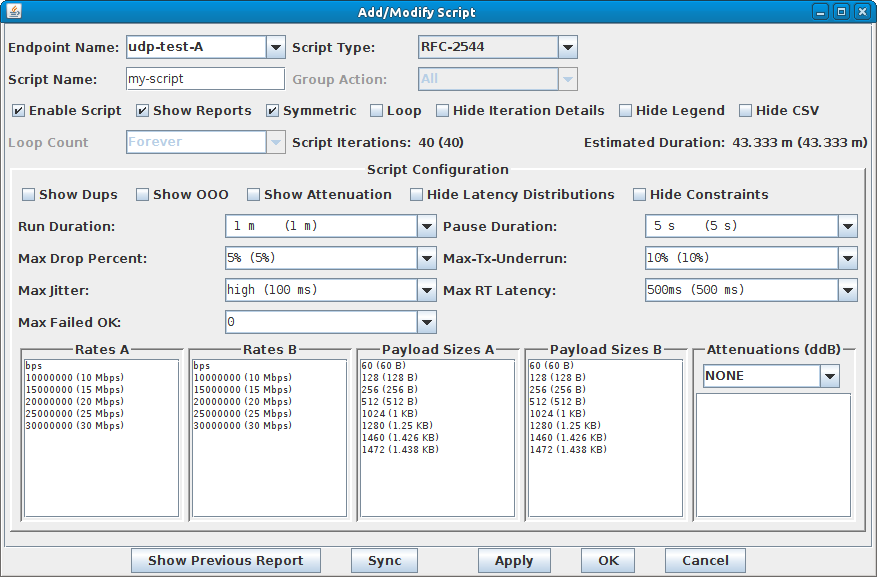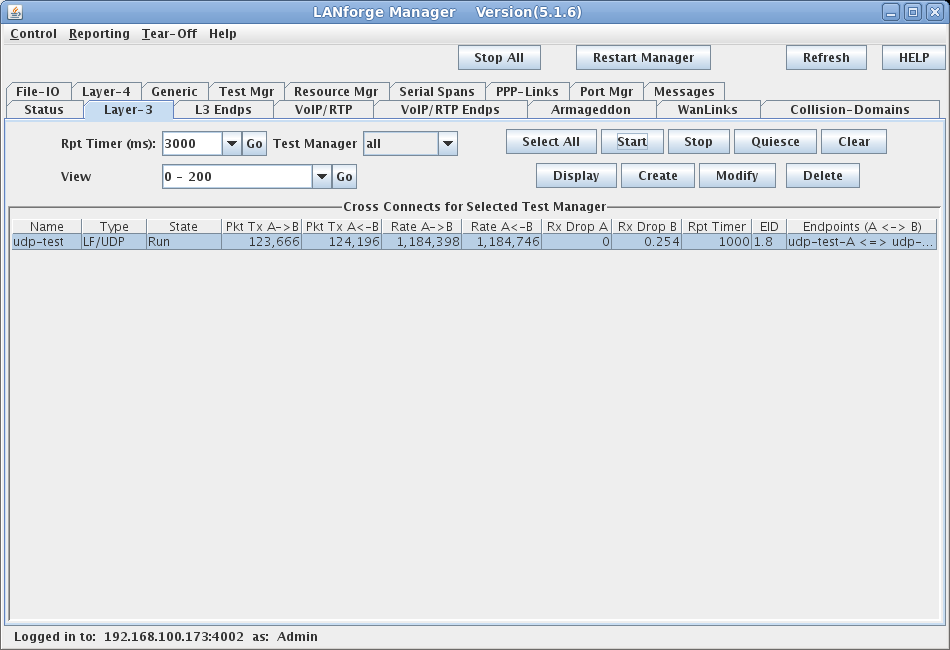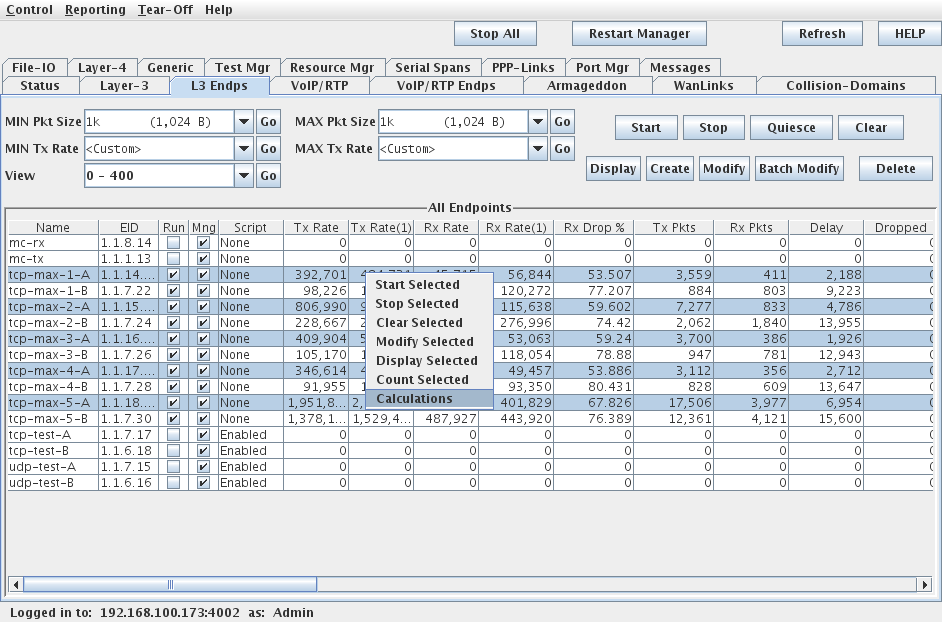|
|
||
| Network Testing and Emulation Solutions |
In this test scenario, LANforge-FIRE is used to generate traffic to a firewall DUT in order to measure the following benchmarks:
NOTE: If you are attempting to run this test scenario, you will need a LANforge license key that enables the correct number of ports and multi-connections. Please contact us at support@candelatech.com for assistance.  |

|



For more information see LANforge FIRE Cookbook example: Scripted Layer-3 Test


For more information see Full script report for the UDP test.











For more information see LANforge GUI User's Guide